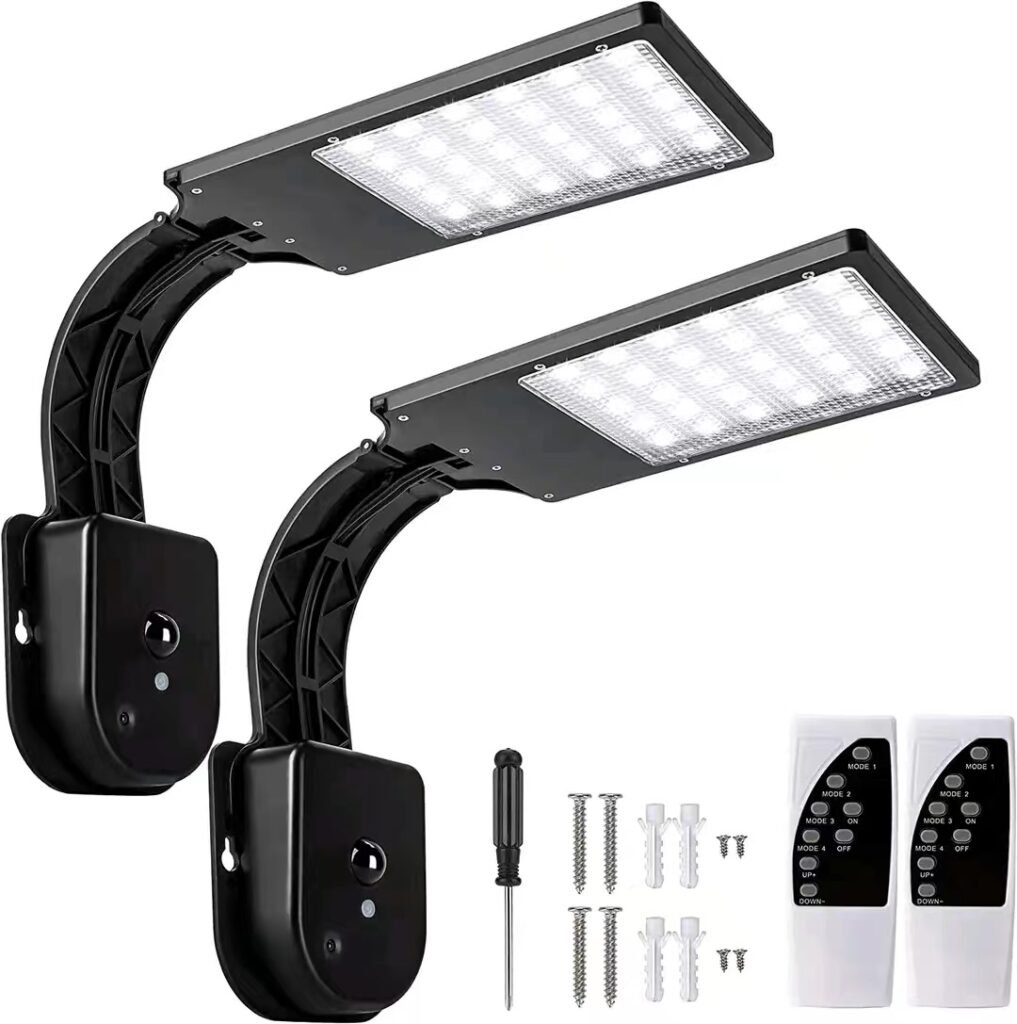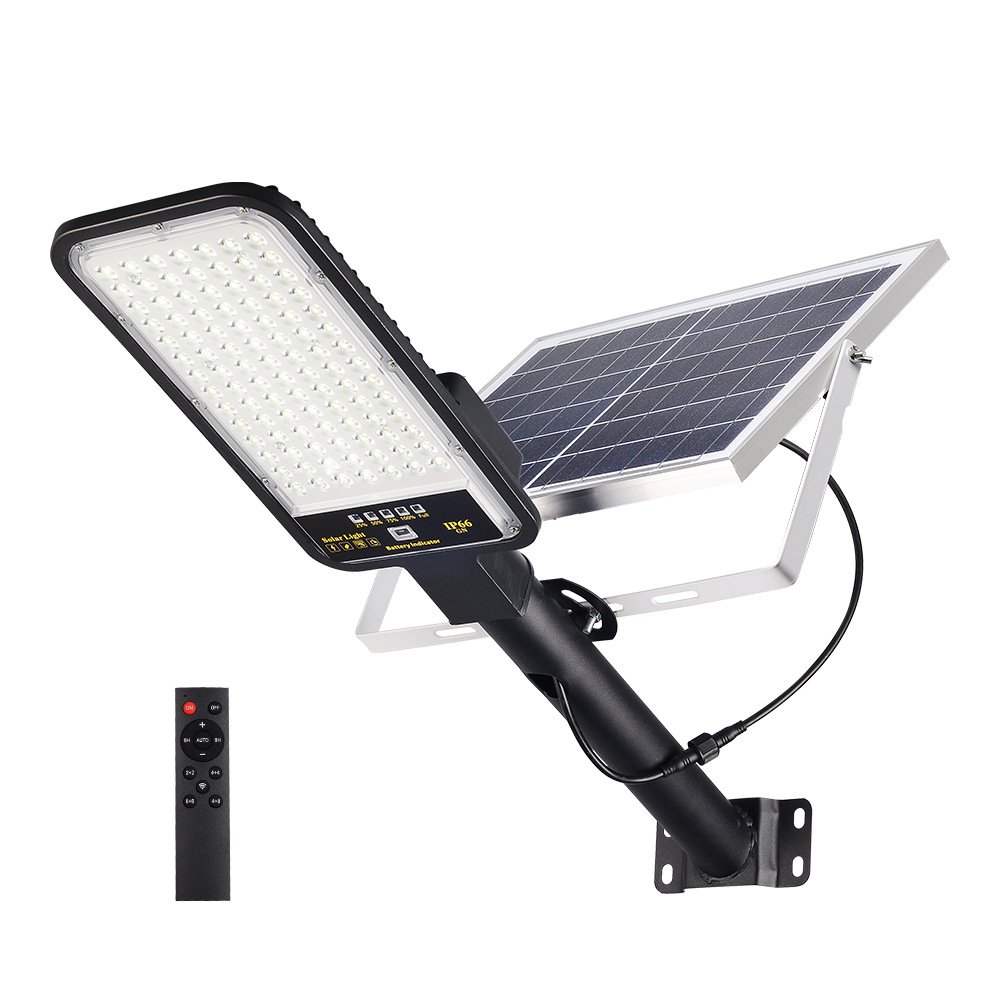The solar light consists of a solar cell module, part of LED lamps, a control box (its control box contains the charger, controller, and battery), and light poles several parts. Solar panel luminous efficiency of 127Wp/m2, high efficiency, the wind-resistant design of the system is very favorable. The lamp head part of the 1W white LED and 1W yellow LED integrated into the printed circuit board is arranged as a specific spacing of the dot matrix as a plane light source. The control box is made of stainless steel, which is beautiful and durable. The maintenance-free lead-acid battery is placed inside the control box, and the particular charge controller for solar street lights is successfully developed by the patented technology of slow pulse fast charging and discharging. The system uses a valve-regulated sealed lead-acid battery, which is also called a “maintenance-free battery” because of its little maintenance, which is conducive to reducing system maintenance costs. The charge and discharge controller is designed to take into account the functional readiness (with light control, time control, over-charge protection, over-discharge protection and reverse connection protection, etc.) and cost control to achieve a high-cost performance ratio.
Solar energy is produced by the continuous process of nuclear fusion reactions in the sun’s interior or on the surface of the sun’s nuclei. The average solar radiation intensity in the Earth’s orbit is 1367w/㎡. The standard peak intensity at sea level is 1kw/㎡, and the annual moderate radiation intensity at a point on the earth’s surface for 24h is 0.20kw/㎡, which is equivalent to 102,000TW of energy, on which human beings depend for their survival, including all other forms of renewable energy (except geothermal energy). Renewable energy (except geothermal energy resources). Although the total amount of solar energy resources is equivalent to more than 10,000 times the energy used by humans, the low energy density of solar energy varies from place to place and from time to time, which is the main problem facing the development and use of solar energy. These characteristics of solar energy can limit its role in the overall integrated energy system.
Although the energy radiated by the sun into the earth’s atmosphere is only 2.2 billionth of its total radiated energy it is already as high as 173,000 TW, which means that the sun hits the world with the energy equivalent of 5 million tons of coal every second. The wind, water, ocean temperature difference, wave, and biomass energy as some tidal energy on earth are all derived from the sun. Even the fossil fuels on earth (such as coal, oil, natural gas, etc.) are fundamentally solar energy stored since ancient times. So the scope of solar energy in a broad sense is enormous. In contrast, solar energy in a narrow concept is limited to the direct conversion of solar radiation energy to photothermal, photoelectric, and photochemical.

Solar energy mostly referred to as the sun’s radiant energy is used in modern times to generate electricity. Since the formation of the Earth, living creatures have lived mainly on the heat and light provided by the sun, and since ancient times humans have also known how to dry objects with sunlight and use it as a method of preserving food, such as making salt and salting fish. However, with the reduction of fossil fuels, it is only with the intention of further development of solar energy. Solar energy is used in two ways: passive use (photothermal conversion) and photovoltaic conversion. Solar power is an emerging renewable energy source. Solar energy in a broad mind is the source of many energy sources on earth, such as wind energy, chemical energy, the potential energy of water, etc.
With the increasing poverty of the earth’s resources, the investment cost of elementary energy is climbing higher and higher, and various safety and pollution hazards can say be everywhere. In this way, solar lighting products should be born after the popularity of solar water heaters, where we make a practical comparison between the effects of solar lamps and the use of utility lamps and lanterns.
Firstly, the utility lighting installation complex: on the utility lighting project, there are complex operating procedures. First of all, to lay the cable, here we have to carry out the cable trench excavation, laying concealed pipe, pipe threading, backfill, and a lot of basic engineering. Then a long period of installation and commissioning, such as if anyone line has a problem, it is necessary to rework a large area. And the terrain and line requirements are complex, and labor and auxiliary materials are costly. Solar lighting is easy to install: When installing solar lighting, you don’t need to lay complicated lines, make a cement base, and then fix it with stainless steel screws.
Secondly, utility lighting fixtures have high electricity costs: utility lighting fixtures work with fixed high electricity costs, and with long-term uninterrupted maintenance or replacement of lines and other configurations, maintenance costs increase. Solar lighting fixtures are free of electricity: solar lighting fixtures are a one-time investment, without any maintenance costs, three years to recover the investment costs and long-term benefits.

Finally, utility lighting has safety hazards: utility lighting brings many safety hazards due to the quality of construction, the transformation of landscape lighting, aging materials, irregular power supply, conflicts of water, electricity, and gas pipelines, etc. Solar lighting has no safety risks: solar lamps and lanterns are ultra-low voltage products, safe and reliable operation.
Other advantages of solar lighting: green and environmentally friendly, can add new selling points for the development and promotion of noble ecological communities, can continue to reduce property management costs, and reduce the cost of the public share of owners. In summary, the inherent characteristics of solar lightings, such as safety without hidden dangers, energy saving without consumption, green, easy installation, automatic control, and maintenance-free, will bring distinct advantages directly to the sales of properties and construction of municipal projects.
If you want to know more about lighting-related consultation, please feel free to consult: www. enetcl.com. You can also add my WhatsApp number +86 13068240892. At the same time, we also hope you can give us valuable advice or suggestions. Thank you!




